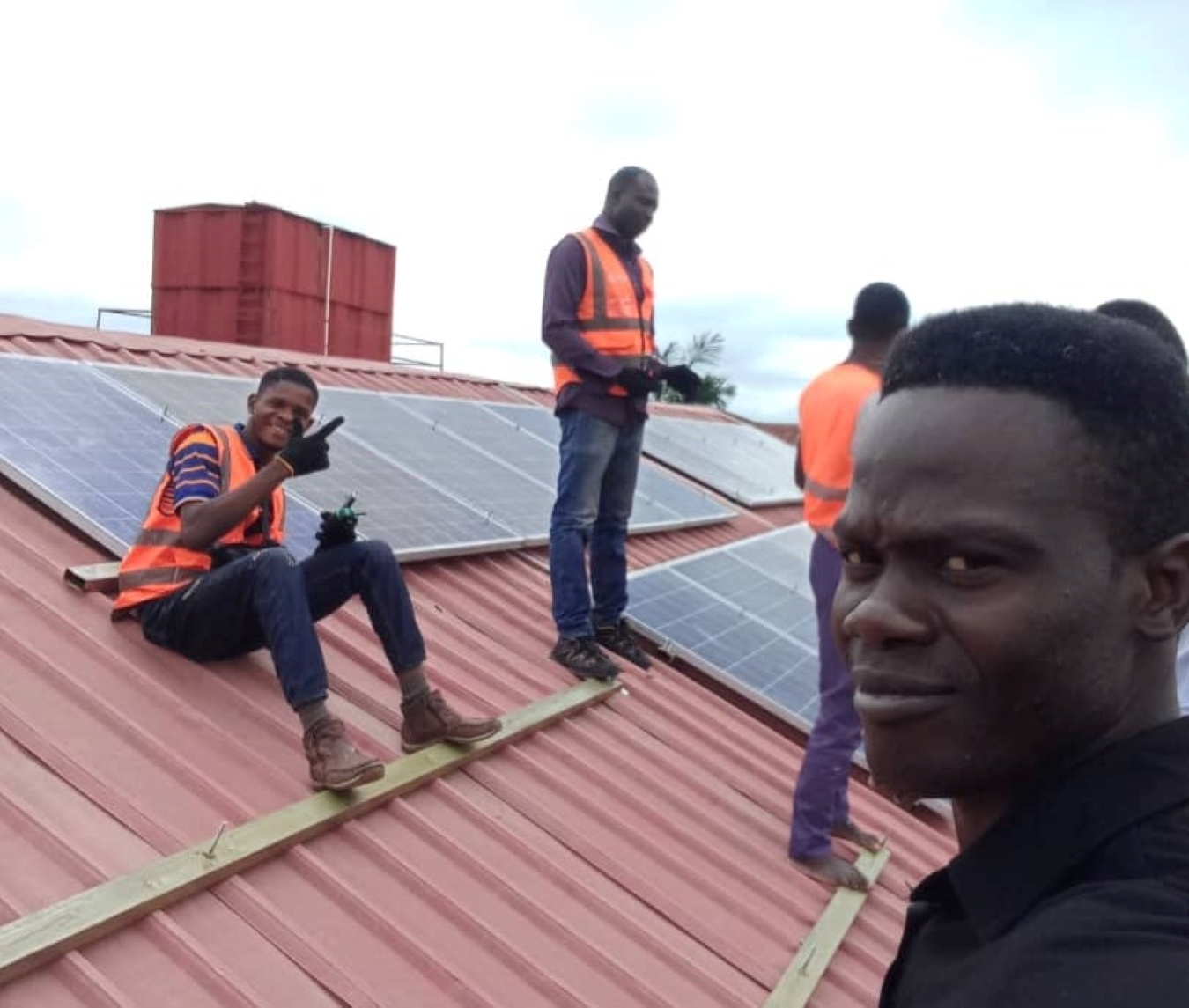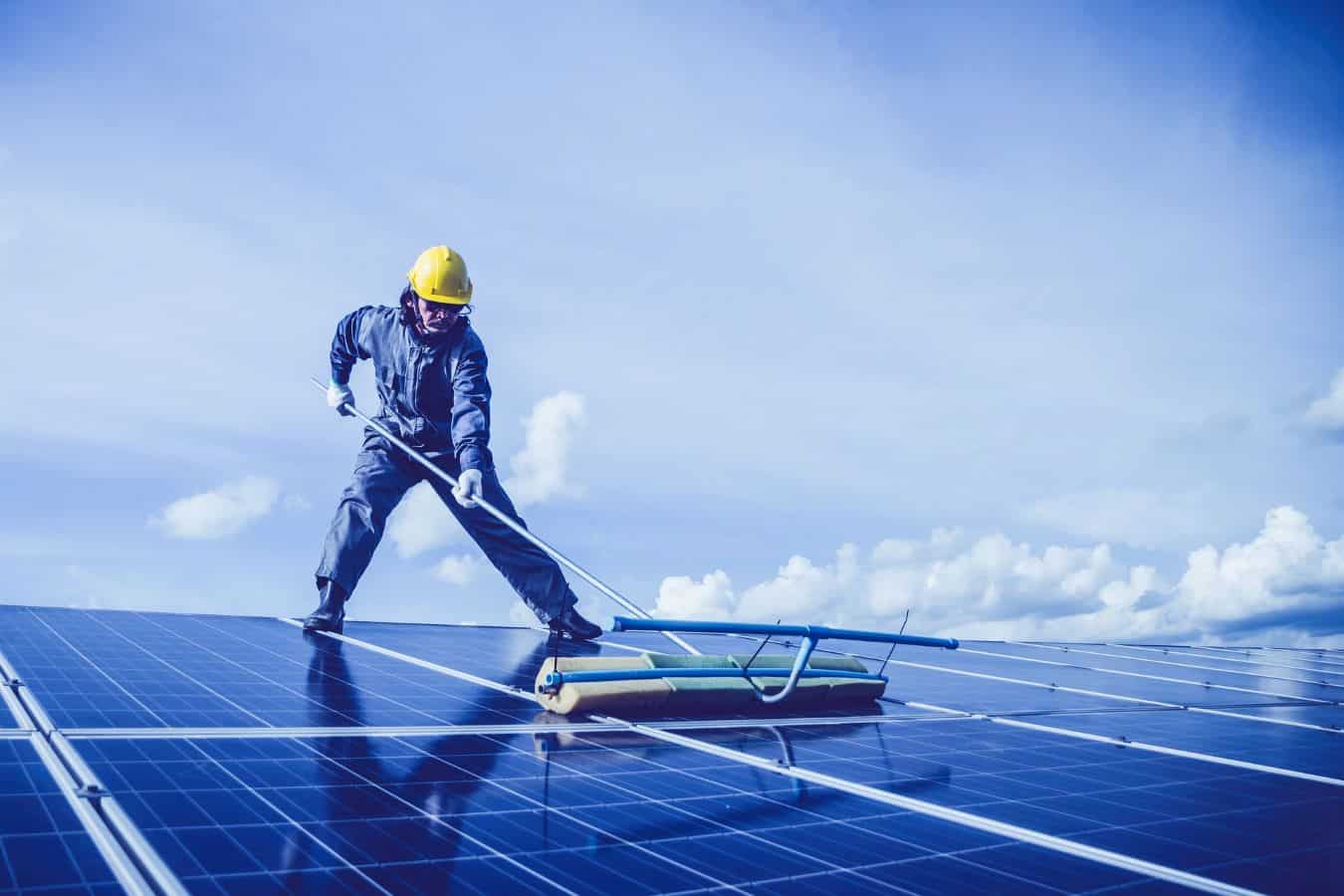If you’ve ever been curious about renewable energy sources or have considered implementing solar power, you’ve likely come across the question “what is photovoltaic array.”
In our quest for clean and sustainable energy sources, photovoltaic arrays have emerged as a promising solution.
But what exactly is a photovoltaic array? How does it work, and why is it becoming increasingly popular?
If you’re curious to understand the basics of this innovative technology, you’ve come to the right place.
In this blog post, we will delve into the world of photovoltaic arrays, exploring their composition, and functionality.
We will also discuss the incredible potential they hold in harnessing the power of the sun.
Get ready to uncover the fascinating science behind photovoltaic arrays and discover how they are revolutionizing the generation of electricity.
What Is A Photovoltaic Array?
A photovoltaic array – solar array, is a collection of photovoltaic (PV) modules or solar panels that are interconnected to generate electricity from sunlight.
These modules consist of multiple solar cells that convert sunlight directly into electricity through the process of photovoltaic effect.
The photovoltaic array is typically installed in an open area, where it can receive maximum sunlight exposure. For example on rooftops or in solar farms
This allows the solar cells to absorb the photons from the sunlight and release electrons, creating a flow of electricity.
The amount of electricity generated depends on various factors – including the size of the array, the efficiency of the solar cells, and the intensity of the sunlight
The PV modules within the array are made up of semiconductor materials. Such as silicon – which has unique properties that enable them to generate electricity when exposed to sunlight.
These materials have two layers: a positively charged layer and a negatively charged layer.
When photons from the sunlight strike the solar cells, they knock electrons loose from their atoms, creating an electric current.
This current is then collected and channeled through an inverter.
The inverter then converts it into usable alternating current (AC) electricity for powering homes, businesses, or other electrical devices.
One of the key advantages of a photovoltaic array is its ability to generate electricity cleanly and silently. It does not emit any greenhouse gases or pollutants.
This makes it a sustainable and environmentally friendly alternative to traditional fossil fuel-based energy sources.
Additionally, with advancements in solar technology, the efficiency and cost-effectiveness of photovoltaic arrays have improved significantly over the years.
Hence, they are an increasingly popular choice for renewable energy generation.
In summary, a photovoltaic array is a collection of interconnected solar panels that convert sunlight into electricity using the photovoltaic effect.
It offers a clean and sustainable energy solution, helping to reduce reliance on fossil fuels and mitigate the impacts of climate change.
How Does A Photovoltaic Array Work?
A photovoltaic array, also known as a solar array, is a collection of interconnected solar panels that work together to convert sunlight into electrical energy.
The process by which a photovoltaic array works is quite fascinating. It all starts with solar panels, which are made up of solar cells.
These cells are typically made of semiconductor materials, such as silicon.
When sunlight hits the solar cells, it excites the electrons within the material, causing them to move and create an electric current – This process is known as the photovoltaic effect.
The solar panels in a photovoltaic array are strategically positioned to maximize exposure to sunlight. They are often mounted on rooftops or ground-mounted in areas with ample sunlight.
The angle and orientation of the panels are adjusted to capture the most sunlight throughout the day.
Once the solar panels capture the sunlight and generate an electric current, it is then converted from direct current (DC) to alternating current (AC) through an inverter.
This is because the electricity produced by the solar panels is in DC form, but most household appliances and the power grid operate on AC.
The converted AC electricity can be used to power various electrical devices and appliances in homes, businesses, and even entire communities.
Excess electricity produced by the photovoltaic array can be stored in batteries or fed back into the grid for others to use.
One of the most significant advantages of a photovoltaic array is its ability to generate electricity from a renewable and abundant source – sunlight.
This clean and sustainable energy source helps reduce reliance on fossil fuels and decrease greenhouse gas emissions.
Understanding how a photovoltaic array works is not only fascinating but also highlights the potential of solar energy in powering our world.
The Composition Of A Photovoltaic Array
A photovoltaic array, commonly known as a solar panel system, is made up of several key components that work together to convert sunlight into usable electricity.
Understanding the composition of a photovoltaic array is essential to grasp how solar energy is harnessed.
The first component of a photovoltaic array is the solar panels themselves.
These panels are composed of multiple solar cells, which are usually made of silicon.
The Solar cells are responsible for capturing sunlight and converting it into direct current (DC) electricity through the photovoltaic effect.
The second crucial component is the mounting system. This system provides the necessary support and structure for the solar panels.
It ensures that the panels are securely attached and properly angled to maximize exposure to sunlight.
Mounting systems can vary depending on the type of installation, such as roof-mounted or ground-mounted arrays. Another essential element is the inverter.
The DC electricity generated by the solar panels cannot be directly used in most household appliances or fed into the electrical grid.
The inverter converts the DC electricity into alternating current (AC), which is the standard form of electricity used in homes and businesses.
To monitor and control the performance of the photovoltaic array, a monitoring system is employed. This system tracks the production of electricity and provides data on the system’s efficiency and performance.
It allows homeowners or system operators to identify any issues or inefficiencies and optimize the array’s operation. Lastly, the array is connected to the electrical grid or a battery storage system through wiring and electrical components.
This enables excess electricity generated by the photovoltaic array to be exported to the grid or stored for later use, ensuring a constant and reliable power supply.
Understanding the composition of a photovoltaic array helps demystify the science behind solar energy and highlights the synergy between various components to harness the sun’s power.
By harnessing the potential of renewable energy sources like solar power, we can move towards a cleaner and more sustainable future.
The Advantages And Potential Of Photovoltaic Arrays
Photovoltaic arrays, also known as solar panels, have become increasingly popular in recent years due to their numerous advantages and immense potential.
One of the main advantages of photovoltaic arrays is their ability to harness the power of the sun and convert it into clean, renewable energy.
This means that they have a significantly lower impact on the environment compared to traditional energy sources, such as fossil fuels.
Another advantage of photovoltaic arrays is their versatility. They can be installed on various surfaces, such as rooftops, ground mounts, or even integrated into building materials like solar tiles.
This flexibility allows for optimal use of available space and makes them suitable for both residential and commercial applications. Furthermore, photovoltaic arrays have a long lifespan and require minimal maintenance.
Once installed, they can operate for decades, generating electricity without the need for constant repairs or replacements.
This not only saves costs in the long run but also ensures a consistent and reliable source of energy.
In terms of potential, photovoltaic arrays have an almost unlimited capacity for expansion. With advancements in technology and increased adoption of solar energy, the efficiency of solar panels continues to improve.
This paves the way for greater energy generation and the possibility of powering entire communities or even cities with solar energy. Moreover, photovoltaic arrays can play a crucial role in achieving energy independence.
By generating electricity on-site, individuals and businesses can reduce their dependence on the grid and potentially save on energy bills.
In some cases, excess energy produced by solar panels can be fed back into the grid, allowing for net metering and further financial benefits.
In conclusion, the advantages and potential of photovoltaic arrays are abundant. They offer an environmentally-friendly energy solution, versatility in installation, long-term reliability, and the ability to contribute to energy independence.
As solar technology continues to advance, photovoltaic arrays will undoubtedly play a significant role in shaping our sustainable future.
Factors To Consider When Selecting Solar Panels For A PV Array
When it comes to selecting solar panels for a photovoltaic (PV) array, there are several important factors to consider.
These factors will determine the efficiency, reliability, and overall performance of your solar system. The first factor to consider is the type of solar panel technology.
There are three main types: monocrystalline, polycrystalline, and thin film. Monocrystalline panels are known for their high efficiency but come at a higher cost.
Polycrystalline panels are more affordable but slightly less efficient. Thin-film panels are the least expensive but have the lowest efficiency.
The second factor to consider is the power output of the solar panels. This is measured in watts and refers to the amount of electricity the panels can generate.
It is important to choose panels with a power output that matches your energy needs. Additionally, you should consider the size and dimensions of the solar panels.
Depending on the available space, you may need to choose panels that can fit on your roof or in your desired installation area. Another crucial factor is the durability and warranty of the panels.
Look for solar panels with a strong warranty and a proven track record of reliable performance.
Finally, you should consider the price and value for money. While it may be tempting to opt for the cheapest option, it is important to balance cost with the quality and performance of the panels.
By considering these factors, you can make an informed decision when selecting solar panels for your PV array, ensuring optimal energy production and long-term savings.
Frequently Asked Questions On Photovoltaic Array

In this section, we will address some frequently asked questions to help you better understand the basics of photovoltaic arrays.
A photovoltaic array is a collection of interconnected solar panels that convert sunlight into electricity using the photovoltaic effect. These arrays are commonly used in solar power systems to generate clean and renewable energy.
Photovoltaic cells within each solar panel in the array absorb photons from sunlight, which then generate an electric current. This current is converted into usable electricity through an inverter, ready for consumption or storage.
A typical photovoltaic array consists of solar panels, racking or mounting systems to hold the panels in place. Also, electrical wiring to connect the panels, and an inverter to convert the generated DC electricity into AC electricity.
The size of the photovoltaic array and the energy demands will determine if it can fully power an entire household. A larger array can generate more electricity, potentially covering the majority or even all of a home’s energy needs.
Most photovoltaic arrays come with warranties ranging from 20 to 25 years, highlighting their durability. With proper maintenance and care, a well-installed photovoltaic array can last well beyond its warranty period. Hence, continuing to produce clean energy for many years.
While the initial investment in a photovoltaic array can be significant, the long-term cost savings are substantial.
Over time, the energy generated by the array can offset or even eliminate monthly electricity bills. Thus, providing a return on investment and contributing to a greener environment.
Final Thoughts On Photovoltaic Array
In conclusion, understanding the basics of a photovoltaic array is essential in today’s world, where renewable energy sources are becoming increasingly important.
We have explored the key components of a photovoltaic array, including the solar panels, inverters, and balance of system components.
We have also discussed the advantages of installing a photovoltaic array, such as reducing energy costs, minimizing environmental impact, and increasing energy independence.
However, it is important to note that installing a photovoltaic array requires careful planning, consideration of local regulations, and professional installation for optimal performance.
Additionally, regular maintenance and monitoring of the system are crucial to ensuring its longevity and efficiency.
As the world continues to shift towards sustainable energy solutions, it is crucial to embrace and understand the potential of photovoltaic arrays.
By harnessing the power of the sun, we can create a greener and more sustainable future for generations to come.
Further Reading And References
Solar Farms Explained: Discover the Secrets of Solar Farms




